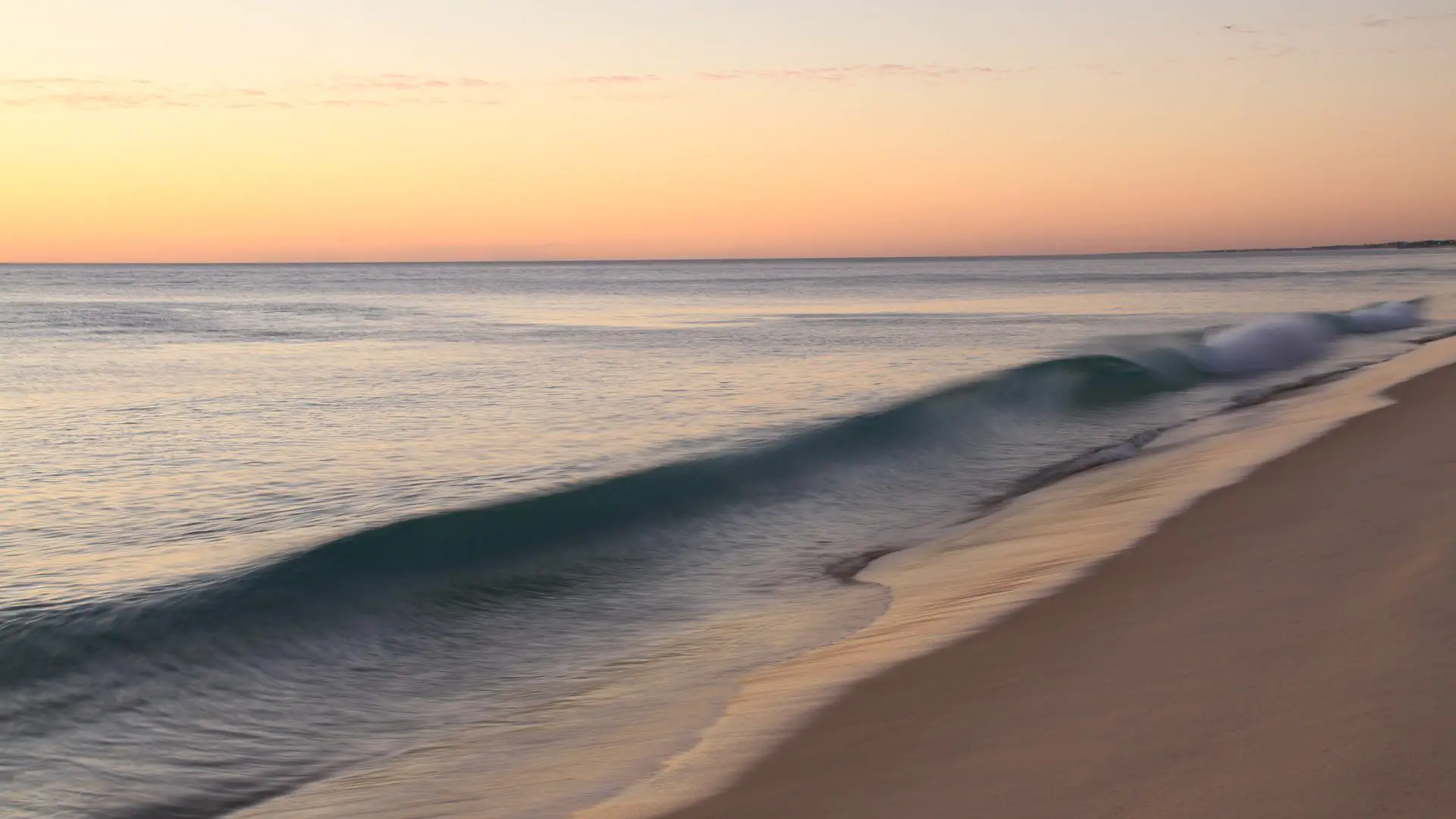The Swell Period in Surfing Explained

As surfers we hear the word swell often, but do we know what the swell period is?
Swell period directly links to the quality of the wave, so it’s important to understand what different swell periods mean and how they will impact your surfing session.
Let’s get into it!
What is Swell Period?
The swell period in surfing refers to the time interval between successive waves.
It is a key factor influencing wave quality across the worlds oceans, with longer periods generally producing more organised, powerful, and surfable waves.
The Importance of Swell Period
Swell period, known as the time it takes for successive wave crests to pass a fixed point, is a critical factor in understanding wave behaviour and surfing conditions.
A longer swell period typically results in more powerful and well-defined waves. Surfers often favour longer periods as they produce waves with a smoother, more predictable ride.
Shorter swell periods, on the other hand, create choppier and less organised waves.
For those looking to catch the perfect wave, paying attention to swell periods in surf forecasts can make the difference between an epic ride and a challenging session.
Swell Period Explained
Now we know what swell period is, let's get into it. A longer swell period measured in seconds, indicates waves with more energy and greater potential for creating well-defined sets.
These waves offer surfers a smoother and more enjoyable ride.
Shorter swell periods result in quicker, choppier waves less enjoyable and more difficult to surf. However, for bodyboarders this can create favourable opportunities for exciting rides!
Swell Periods: The Wave Predictor
Swell period stands out as a fundamental predictor of how waves are formed, influencing the quality of surfing conditions.
This essential surf metric measures the time between successive wave crests, indicating the rhythm and energy within the waves.
Surfers rely on swell periods to gauge the potential for consistent, surfable waves.
Swell Periods and Wave Conditions
Shorter Periods
Shorter wave periods (1-8 seconds) are associated with local wind swells, resulting in choppy and less organised waves. Surfing conditions may be poor, and the waves can feel bumpy.
Longer Periods
Longer wave periods (10 seconds and above) indicate the presence of ground swells, creating more powerful and well-defined waves. Surfing during longer periods is generally more enjoyable, offering smoother rides and epic sessions.
Quality Swell Periods
- Poor: 1-5 Seconds: Short wave periods of 1-5 seconds are associated with local wind swells, resulting in bumpy and disorderly waves. These conditions are generally poor for surfing.
- Average: 6-8 Seconds: Wave periods of 6-8 seconds indicate regional and local wind swells, offering average surfing conditions. The presence of offshore winds can enhance the experience.
- Good: 8-10 Seconds: With medium-distance swells in the range of 8-10 seconds, local surfing conditions improve significantly. This range is a good time to grab your board and head out.
- Very Good: 10-12 Seconds: The power of ground swells starts taking effect, providing more substantial waves. Surfing during this period is definitely worth it.
- Best: +13 Seconds: A long period swell, lasting more than 13 seconds, brings high-quality waves, promising an epic surf session ahead. When the swell period is in this range, surfers can anticipate exceptional and thrilling wave conditions.
Wave Height
Swell period can be directly linked to determining height.
In general, longer swell periods often result in higher and more powerful waves.
A short swell period may produce smaller, choppier waves.
Surfers often look for a balance, aiming for a swell period that aligns with their skill level and preference for wave size.
Wave height and position is further influenced by wave shoaling and refraction due to transitions of ocean depths and coastal alignments.
What are good Swell Periods for Surfing
A good swell period for surfing typically falls in the range of 10 to 12 seconds, as it indicates the influence of ground swells, resulting in more powerful and enjoyable waves for surfers.
Longest Swell Period Ever Recorded
The longest recorded swell period stands at around 24 seconds, showcasing an extraordinary event.
Such extended periods lead to the formation of exceptionally large and powerful waves, providing a unique and challenging experience for surfers.
Summing It Up: What To Do Now
Okay now you will be able to read surf forecasts and understand the swell periods before your surf session. Next go check out the swell periods for your favourite surf spot for the upcoming week!
If your interested in learning more about surfing discover our many guides that will inform you on your surfing journey. Don't forget to follow us on Facebook & Instagram to stay informed on our amazing surf shots and stories shared from surf creators around the world!
Frequently Asked Questions
What is a good swell for surfing?
A good swell for surfing typically ranges between 4 to 8 feet, providing consistent and rideable waves for surfers.
How long do wave swells last?
The duration of wave swells varies, but they commonly last for several days. Swells generated by distant storms can maintain surfable conditions for an extended period.
Does big swell mean big waves?
Yes, generally, a big swell does mean big waves. The size of waves is directly influenced by the height and energy of the swell. Larger swells tend to produce larger and more powerful waves.
How many seconds is a good swell for surfing?
A good swell for surfing generally has a wave period of around 10 to 15 seconds. A longer period between waves often results in more powerful and surfable conditions.
Is a 1.5-meter swell big?
A 1.5-meter swell is considered small to moderate in size. While it may produce fun waves for beginners, experienced surfers often prefer larger swells for more challenging and exciting conditions.
What does 14s swell mean?
A 14 second swell suggests a relatively long period resulting in more organised, powerful, and potentially larger waves.


